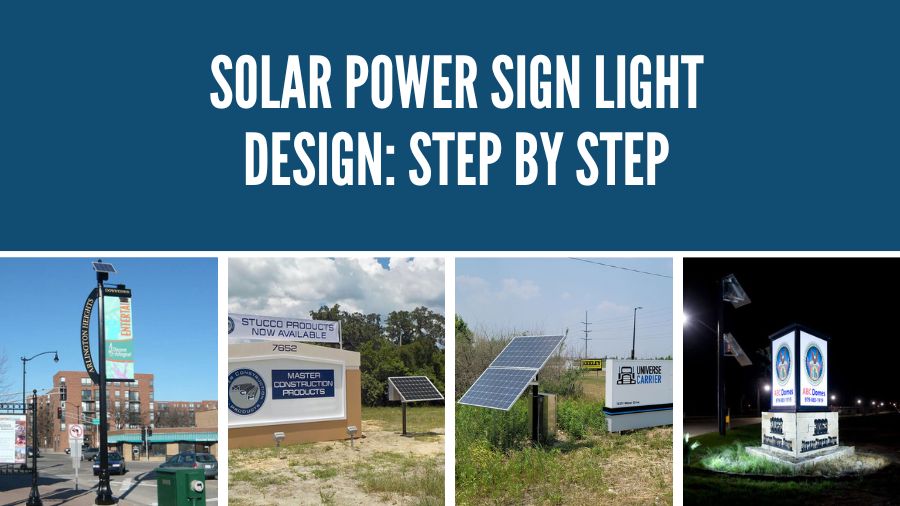One of our most popular articles is Street Light Design, and I thought it was about time to offer a step-by-step to sign lighting design. This will give you information on designing a perfect sign lighting solution from beginning to end.
Step 1 – Determine the size of the sign
The first thing is, how big is the sign? Is it single or double-sided? Does the entire sign need to be illuminated, or just a section of the sign?
What about internally illuminated signs? Do you know what you want to use for internally illuminating the sign? How many watts are you going to need for operation?
Knowing exactly how much area is going to require coverage will help narrow down the design parameters quickly. Internal signs require additional engineering, but knowing the height, width, and depth of the sign cabinet is part of the first step to determining how much light is going to be required.
Step 2 – Find out if electricity is available
A lot of signs are installed in medians or out where standard grid power doesn’t readily exist. If you were to bring electricity to the site of the sign, how much is this going to cost? Is this going to destroy surrounding areas such as roads, landscapes, etc? Don’t forget to leave the repair work out of your cost figures.
Step 3 – Determine the lighting requirements
How much light will be required to adequately illuminate the sign? Any lighting company can help you determine what are the best light levels for a sign and offer suggestions. Our rule of thumb is somewhere between 15-25 Watts per 10' x 10' area is adequate, depending on the ambient light nearby.
Also, does the sign need to be illuminated from dusk to dawn? For businesses, this could be a yes for nighttime marketing efforts. For an HOA, this may be no and will allow for the lights to turn off after midnight and then on an hour or so before dawn. Lowering power consumption helps on many levels. This all depends on many factors and can be customized as research develops.
Step 4 – Final all alternatives
Solar power sign light systems come in a variety of shapes, sizes, costs, etc. There are solutions out there online that are only a few hundred dollars and others that range in the thousands. Depending on the long-term requirements and how you want the system to operate can determine what system you will need.
Step 5 – Get lots of quotes
The last step is to send your information to companies for quotes. Just like with anything else, get multiple quotes and weigh the pros and cons of every company and situation. The lowest quote is not always the best, so make sure to do your research on companies and products before you submit a purchase order. Compare information from companies like light output, system components, warranty, life expectancy, etc., to help you determine what you are actually paying for and what you are spending.
If you take your time, do your research, and gather the needed requirements, your next sign lighting project will be a success. Never be afraid to ask a lot of questions. They may save you time and money in the long run.


